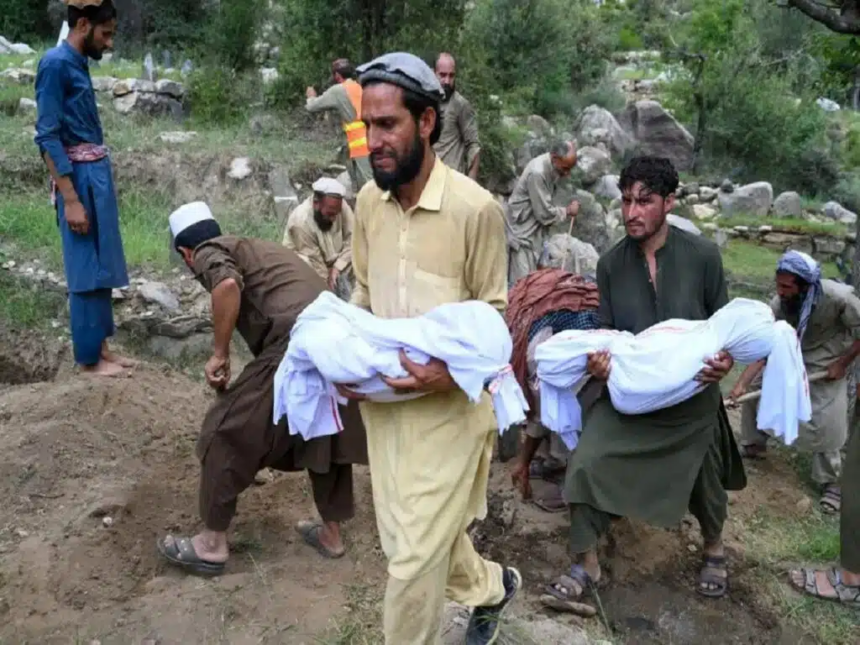RASC News Agency: The human cost of the devastating earthquake in Kunar continues to mount, underscoring the fragility of life in a country already crippled by decades of war, poverty, and neglect. On Thursday, September 4, Taliban deputy spokesman Hamdullah Fitrat confirmed that the official death toll had risen to 2,205, with at least 3,640 others injured. He admitted that these figures represent only the districts of Mazardarrah in Nurgal, as well as Diwegal, Suki, and Manugi, warning that numbers could rise further as recovery efforts drag on. Yet international agencies warn that the Taliban’s numbers barely capture the scope of the tragedy. The International Federation of the Red Cross and Red Crescent revealed that no fewer than 84,000 people have been directly or indirectly affected, with thousands displaced, forced into makeshift shelters, and stripped of basic necessities. The organization cautioned that humanitarian needs are expanding “on a scale that the local authorities cannot possibly manage.”
A separate assessment by Islamic Relief painted an even bleaker picture. In two districts and seven villages of Kunar, nearly 65 percent of homes have been obliterated, 33 percent severely damaged, and only 2 percent remain habitable. Families have been shattered: in many households at least two members are confirmed dead and three others seriously wounded. The villages of Badinzi, Gajizi, Sperah, Gajizi Tangi, Ghaziabad, Masood, and Wadir have suffered near-total destruction, with entire communities left without food, water, or medical care. The United Nations has warned that the true death toll may be far higher, as countless bodies remain buried under collapsed homes and mud-brick structures in remote mountain areas that remain cut off from aid convoys.
The first quake, registering 6.0 on the Richter scale, struck late Sunday night, flattening swathes of Kunar and neighboring Nangarhar. It has already been described as one of the deadliest natural disasters in Afghanistan in recent memory. A second tremor of 5.5 on Tuesday triggered landslides that further obstructed already precarious mountain roads, leaving entire districts isolated and unreachable. For survivors, conditions are rapidly deteriorating. Hospitals are overwhelmed with patients requiring urgent surgery, food stocks are depleted, and tens of thousands of families are sleeping under the open sky amid falling temperatures. Local media reports suggest that many victims remain trapped beneath rubble, while the number of Taliban-deployed rescue teams is woefully inadequate in comparison to the scale of devastation.
The disaster has brutally exposed the Taliban’s incapacity to govern in moments of national crisis. Rather than mobilizing a rapid, coordinated relief effort, the regime has offered only fragmented numbers and vague reassurances while leaving survivors to the mercy of overstretched international aid agencies. For the victims, this absence of leadership has compounded their suffering: families grieve in silence, children search for food among ruins, and the wounded wait in overcrowded hospital corridors without treatment. Observers note that while previous Afghanistan’s governments despite corruption and inefficiencies were at least able to coordinate international partners during natural disasters, the Taliban’s international isolation has left the population dangerously vulnerable. Aid pledges have dwindled, not because the world is indifferent to Afghanistani suffering, but because many countries refuse to channel resources through a regime more concerned with enforcing its dogma than saving lives.
The earthquakes of Kunar have therefore laid bare two tragedies: one wrought by nature, the other by politics. For the thousands who have lost their homes, their families, and their future, the Taliban’s indifference is proving as deadly as the tremors themselves.






